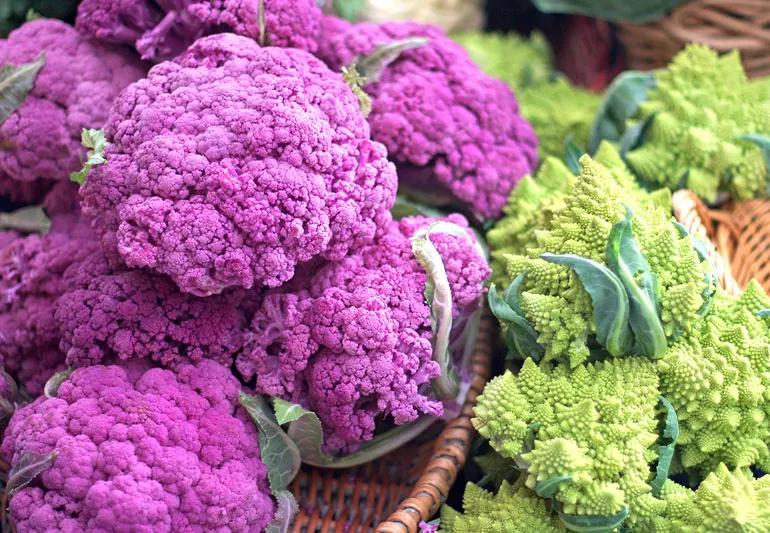If you’re eating the same thing, adding variety to your diet benefits you

Ugh, you’re sitting and picking at that same grilled chicken salad and pasta every day and frankly, you’re getting bored of it. Have you ever noticed that your grocery list and your meal prep look the same every week? A lack of variety may help you stay on track with your diet.
Advertisement
Cleveland Clinic is a non-profit academic medical center. Advertising on our site helps support our mission. We do not endorse non-Cleveland Clinic products or services. Policy
Add a little spark to your meal routine and you’ll avoid diet burnout.
“Slip a few new foods into your grocery cart every week to increase variety in your diet,” says dietitian Beth Czerwony, RD. “This not only makes your routine more exciting and fresh — it may also offer impressive nutritional benefits.”
Here are four reasons to rotate your foods:
You may miss out on different nutrients that different foods provide if you eat the same foods every day. For instance, cashews and pine nuts are a good source of magnesium. But if you don’t occasionally eat sunflower seeds and hazelnuts, too, you may be skimping on your vitamin E.
The same rule applies to foods’ color. Each color of the rainbow brings unique nutritional benefits, essential for optimal health. For example, green veggies and fruits provide you with lots of plant-based phytonutrients like chlorophyll. But you may lack the phytonutrients from red, orange, yellow, and blue/purple plant-based foods.
The United States Department of Agriculture recommends building your plate with a variety of fruits, veggies, grains, dairy and lean protein. Make sure to fill half your plate with fruits and veggies and then add whole grains and protein.
Advertisement
Try to add new color variations into your diet rotation like purple cauliflower, white asparagus, sweet potatoes and rainbow-colored carrots. If you’re not sure where to start, consult with a dietitian.
It’s true — eating a nutritious diet with a lot of variety may lower your risk of mortality. One study of 59,000 women found that those who rotated 16 to 17 healthy foods through their diet had a 42% lower mortality from all causes than those eating zero to eight healthy foods.
The researchers concluded that nutritious variety was as important — if not more so — than limiting unhealthy foods. So instead of only focusing on limiting inflammatory foods, be sure to increase the variety of nutrients in your diet with plenty of vegetables, fruits, nuts and seeds, healthy fats and lean protein.
In one study, researchers compared two groups of men and women, ages 40 to 69. The first group incorporated a variety of foods into their diet (such as fish, seafood, vegetables, seaweed, fruits, nuts, etc.).
The second ate a limited diet with very little variety. The study found that those with more variety in their diet were at lower risk of metabolic syndrome. This syndrome, involving abdominal obesity, low HDL cholesterol and high fasting glucose levels, increases your risk of heart disease, diabetes and stroke.
Say goodbye to those stubborn inches around your waistline. Rotating foods and eating a varied diet also helps increase the diversity of good bacteria in your gut. Greater diversity in gut bacteria is associated not only with better overall health, but also with weight loss.
One study suggested that people who follow a vegetarian/vegan diet have a better bio diversity in their gut bacteria verses those who eat animal products.
“The benefits of having such a diverse gut microbiome are impressive, studies show an increase in anti-inflammatory and anti-pathogenic effects which directly have cardiovascular benefit,” she says. “Other positive effects of varying bacteria include improved immunity and improved functions in the gut.”
One of the best ways to achieve this altered gut bacteria is to have a variety of fruits and vegetables in varying colors in the diet.
In a 2016 study, researchers analyzed stool samples from 1,300 twins in the United Kingdom. They found a link between bacterial diversity and markers for obesity and heart disease. Especially strong was the link between more dietary diversity and less abdominal fat.
The researchers also found that the twins’ parents passed on microbes that can increase risk for the belly fat linked to metabolic syndrome.
Advertisement
The easiest ways to add variety and rotate foods? Try one or two new recipes each week using new ingredients and aim to eat all the colors of the rainbow at least once a day. With so many different resources online, you’re bound to find new and exciting ways to introduce a variety of food into your weekly meal plans.
Advertisement
Learn more about our editorial process.
Advertisement

With a focus on internal cues for hunger and fullness, this eating style may revolutionize your relationship with food

Review the ingredients, watch for sugar and fat, and choose one with the right amount of protein for your needs

A typical recommended balanced diet is half fruits and veggies, a quarter protein and a quarter grains

Foods high in protein, fiber and water can help keep hunger at bay

This quirky food trend is harmless, as long as you’re getting enough protein, fiber and healthy fats

Wrapped or sandwiched, try to choose fillings and condiments that are minimally processed, low in saturated fat and high in fiber

Set yourself up for success by carefully choosing your recipes, storage containers and prepping day

These breaks may have some benefits — but they promote an unhealthy attitude toward food

If you’re feeling short of breath, sleep can be tough — propping yourself up or sleeping on your side may help

If you fear the unknown or find yourself needing reassurance often, you may identify with this attachment style

If you’re looking to boost your gut health, it’s better to get fiber from whole foods